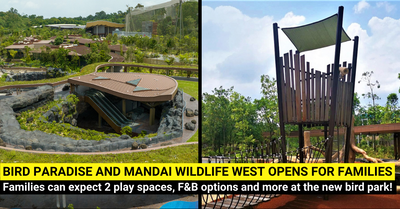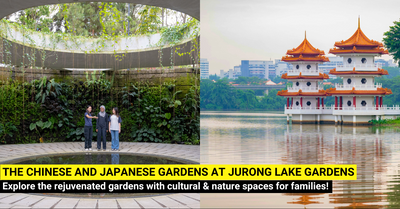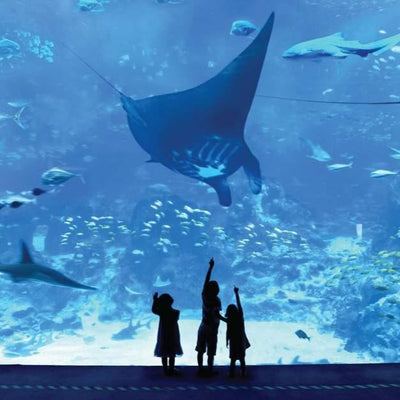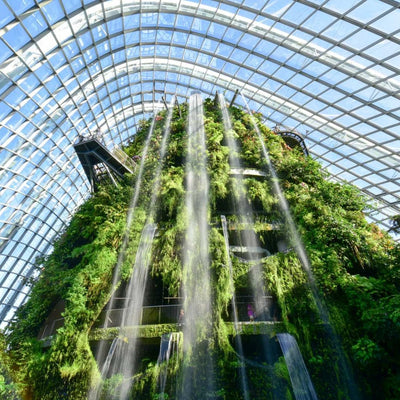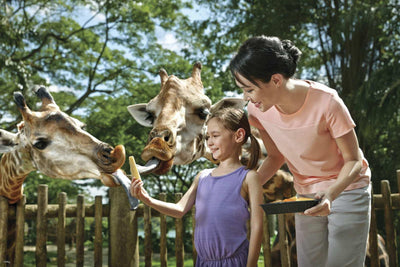Set to open in the second quarter of 2023, the 17-hectare Bird Paradise will be the first of the new wildlife parks located at Mandai Wildlife Reserve to open to the public.

Venue: 80 Mandai Lake Rd, Singapore 729825
Opening Hours: TBC
Admission: TBC
Singapore’s new bird park - Bird Paradise - will transport visitors into a colourful world that will be the home to 3,500 birds from over 400 avian species. Designed to encourage discovery at every turn, Bird Paradise will welcome visitors into immersive and naturalistic mixed-species habitats, where they will explore eight large walk-through aviaries which reflect different biomes of the world such as dense African rainforests, South American wetlands, Southeast Asian paddy fields, Australian dry eucalypt forests, and more.
Families can also expect a dry and wet playground at the park too!
Relocating Jurong Bird Park

Jurong Bird Park will be closing in early 2023 as part of the move. By co-locating all of Singapore’s wildlife parks and other nature-based experiences together at the Mandai Wildlife Reserve, it is being positioned as a unique destination for nature and wildlife activities.
This will offer more potential for the Bird Paradise, which includes an avian hospital, and the Mandai Wildlife Group’s other operating parks to become leading centres of animal conservation, education and research.
Guided by the knowledge and experience accumulated from operating the 51-year-old Jurong Bird Park, the new Bird Paradise will continue to preserve the incumbent bird park’s heritage and legacy and pay tribute to Singapore’s pioneer wildlife park by retaining iconic features such as the heliconia collection.
Creating Different Ecologies and Habitats

The new bird park is designed to emphasise environments inspired by different ecologies and habitats, the natural behaviours of birds and the unique avian adaptions found across species.

Visitors will be transported to different parts of the world as they wander and explore the large aviaries which reflect the naturalistic ambiance of distinct regions with geographically-appropriate features, vegetation and bird species. The habitats will come to life with the songs and natural behaviours of the birds, from taking flight to feeding, nesting or foraging through the undergrowth.
Key Highlights

A key highlight is the Heart of Africa where visitors will find themselves in the forested valleys of continental Africa. Featuring an elevated canopy experience, visitors will be led into a dense misty forest with meandering forest streams, where they can observe birds displaying their natural behaviours.

A stunning recreation of the tranquil bamboo forests and sloping rice terraces of Southeast Asia can be found at Wings of Asia. The landscaping serves more than just an aesthetic function, with the labyrinth of bamboo providing a major food source for the animals living in the habitat. The terraces also create a unique ecosystem for birds like the critically endangered Baer’s Pochard and endangered Milky Stork.

Over at the Penguin Cove, a state-of-the-art indoor habitat will eventually be home to penguins such as the Gentoo Penguin, King Penguin, Humboldt Penguin and Northern Rockhopper Penguin. It will offer guests a fascinating look into the oceanic life of these birds.
Some of the park’s most threatened species will be housed in Winged Sanctuary, a zone specially dedicated to birds of high conservation value including critically endangered species like the Philippine Eagle, Vietnam Pheasant, and Negros Bleeding-heart.
Educating Visitors On Conservation

Throughout the park, education programmes and features such as tactile and digital interactives, bird interactions and feeding sessions will allow visitors to engage in hands-on and interactive encounters with the birds. Going beyond play, these elements also create awareness among visitors and evoke deeper reflection on the real-life threats faced by the animals in the wild
Every area of the park is designed to ignite the call-to-action for visitors to do their part for conservation. Transitional zones in between habitats double up as educational spaces where visitors can learn more about avian features and behavioural patterns. Fun and interactive elements will deepen visitors’ appreciation of the avian world, alongside sensorial exploratives like human-sized nests, and opportunities to recreate the dawn choruses of Southeast Asian songbirds.
Visitors can embark on meaningful behind-the-scenes tours to Bird Paradise’s fully-equipped Avian Health and Research Centre, Avian Nutrition Centre as well as a Breeding and Research Centre. Through these tours, they will learn about breeding programmes as well as how to establish assurance colonies that hedge species in the wild against extinction. They will be exposed to conservation research projects that help to sustain and protect species populations in the wild. A 2,000-seater amphitheatre is also set to enchant with free-flying demonstrations and refreshed presentations.
Play Elements
Families can also look forward to designated family fun areas at Tree Top Play and Egg Splash for dry and wet play respectively. Treetop Play is inspired by the movement of birds within the tree canopies, while Egg Splash takes inspiration from eggs of waterbirds to create a fun, playful waterscape for children.
Moving From Jurong Bird Park To Bird Paradise
Preparations for the great migration from Jurong Bird Park to Bird Paradise began more than three years ago, with the Avian team working on the species plan and acquisition strategy for new species.
Over the last two years, retheming of existing aviaries such as the African Treetops at Jurong Bird Park was done to mirror the new habitats of Bird Paradise to start introducing different bird species that would be housed in the same habitat at the new park. The move is set to happen after Jurong Bird Park closes and will see all its feathered residents relocated to the new Bird Paradise over a few months.
With Singapore’s new bird park set to open next year, development work for the rest of the precinct is also well underway. The remaining features are set to open progressively through to 2025.
*Photo Credits: Mandai Wildlife Group






